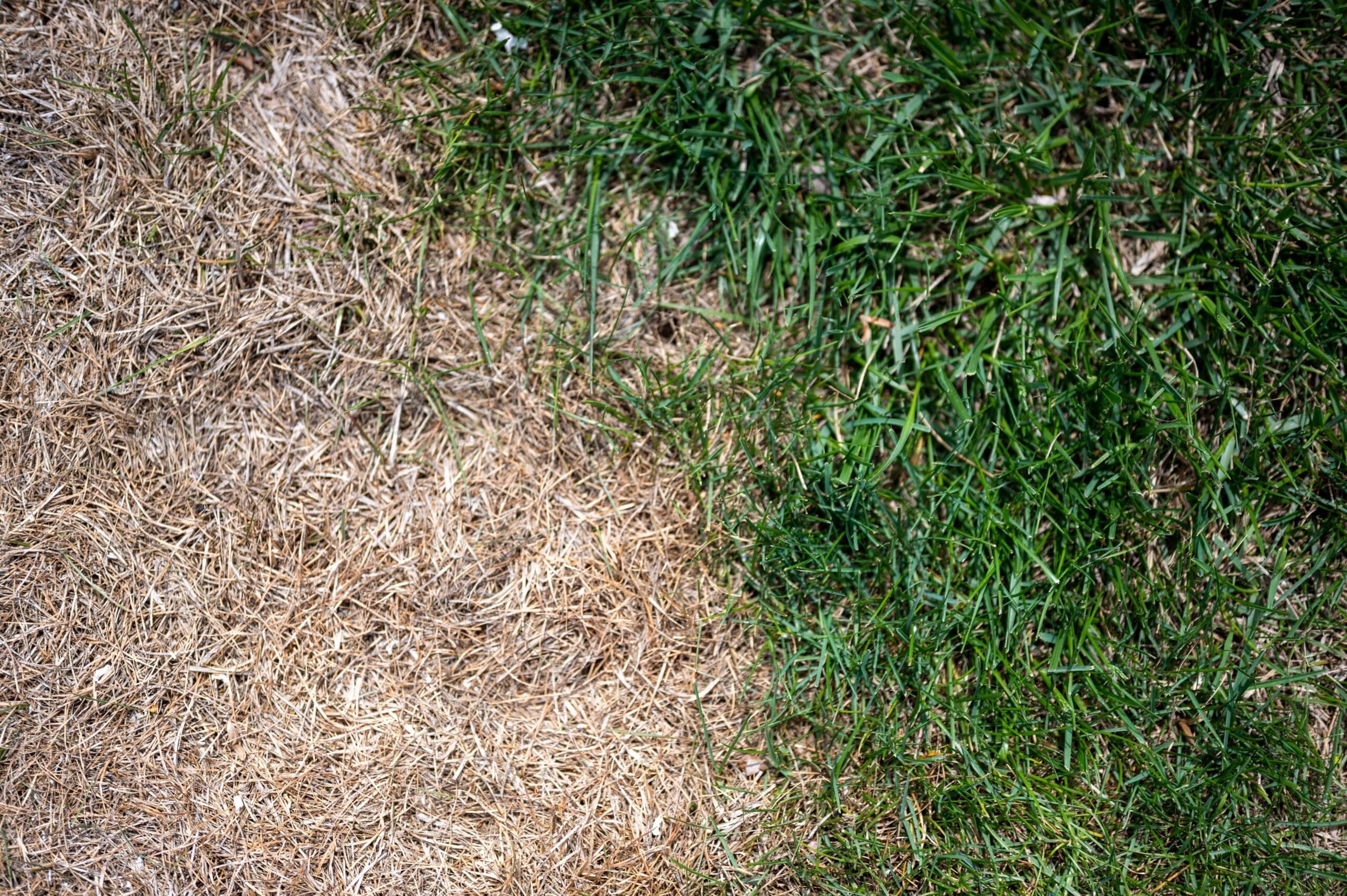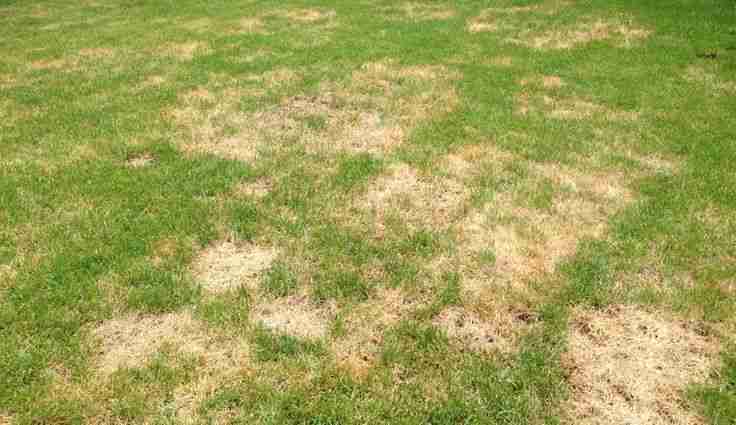The Risks of a Heat Stressed Lawn and How to Treat It
The Risks of a Heat Stressed Lawn and How to Treat It

With the summer season in full swing, temperatures are at a noticeable high. While the summer is a great time to be outside, we often take the time to retreat indoors for the sake of avoiding sunburn and heatstroke. Just as the heat can affect our health, it can impact your lawn’s health, as well. At Benson Enterprises, we understand the importance of keeping your lawn healthy and thriving in the heat of the summer. Our team has put together a list of common risks that come with heat stressed lawn, as well as solutions to treating it.
How Does Heat Affect Your Lawn?
Extreme summer temperatures can be dangerous for grass and can create a variety of problems that can severely damage or kill it. It’s vital to check for these signs throughout the summer, as one or many of them can occur without proper treatment. Here are several ways high heat can impact your yard:
Lack of Recovery
Heat can cause your yard’s health to degrade in a way that prevents it from recovering quickly. Grass typically bounces back quickly when you walk across it, and when other physical stressors go over it. When your lawn becomes heat or drought stressed, its natural defenses can weaken, making it difficult for it to withstand the weight of foot traffic and mowing, as well as leaving it less resistant to pests and diseases. Indications of this issue include lingering footprints in the grass when you walk over it, the grass not recovering well after mowing, or susceptibility to disease.
Dormancy
If the heat becomes too much for your lawn, the grass can enter a dormant state. Dormancy is a self-defense mechanism used for grass to conserve its energy. This slows metabolism and causes the grass to turn brown. It may seem dead, but the grass is still alive and preserving its energy for the arrival of cooler temperatures. During its dormancy, grass can still be susceptible to dying off if it is not receiving a proper amount of hydration.
Discolored Spots
Discoloration can be caused by a few different issues but is a significant indicator that your lawn is in distress from the heat. The tips of the grass or entire grass blades can grow discolored, turning brown or yellow due to the heat stress. You may see this in patches around your yard, or it can cover the entire lawn. When this happens, it’s important to look closer into what may be causing the problem.

Compacted Soil
When your lawn becomes drought stressed, the soil can lose a lot of moisture and become very dense. The added weight of heavy lawn equipment and foot traffic can lead to the soil growing compacted, making it difficult for the grass to thrive. Soil compaction leads to moisture being unable to reach the root system, and in turn the roots grow weak and shallow. The soil’s density can cut your grass off from the water it needs to stay alive. A quick way to see if your soil is compacted is to puncture a hole in the ground with a screwdriver or a similar tool. If it’s difficult to push through, your soil is likely in need of water and aeration.
Weeds
When grass is weak from the heat, weeds are quick to step in. Given their higher resiliency, weeds can use heat stress as an opportunity to take the little resources that your yard has left. If your lawn’s root system is weakened and in compacted soil, the weeds may help to smother the roots and leech out the remaining nutrients in the soil.
Infestations
The hot weather during the summer season is an opportune time for pests to breed and grow, and your lawn can make for an appealing habitat for them. Heat and drought stress can reduce your grass’ ability to recover well, making it easy for insects to settle down and feed off your yard. Pests will eat on the grass, damage it, and leech off the remaining moisture in it. This can result in brown patches on your grass and structural damage to the grass and soil.
Fungal Infections
The summer season doesn’t always result in a drought, and humidity can be just as damaging. Moisture that remains on your grass overnight can be a breeding ground for fungi. Hardier than grass, a fungus can use the excessive moisture to spread across your lawn, steal resources, and damage the grass. Common signs of fungus are discolored patches or circles of grass.
Different Grass Types
Not every type of grass can hold up to the summer heat. Depending on the kind of grass you have on your lawn, it may be more susceptible to heat or drought stress. Cool season grasses like Fescue and Kentucky Bluegrass can only handle temperatures up to 75 degrees before they fall dormant or die out. If your grass is growing wilted or discolored in the heat, it may be because the temperature threshold has been reached.
How to Fix Heat Stressed Lawn Issues
Heat stressed lawn can be devastating for your grass, making it very important to have ways to prevent and treat it. Catching the signs of heat and drought stress early on can save your lawn from more damage in the long run, so it’s vital to keep an eye on your lawn when the heat rises and to watch for the signs. If your grass is showing these signs, here are ways to keep your lawn healthy:
Water Deeply
Making sure your grass gets the right amount of water is important, and it should be watered deeply to encourage deeper root growth. It’s best to water your lawn in the early morning hours, allowing the moisture plenty of time to soak in before the afternoon temperatures can evaporate it, without encouraging fungal growth.
Aerate Your Lawn
Aerating your lawn is a great way to allow for better water intake in your yard and to prevent weed growth. The process removes small plugs of dense soil in your yard to stop the compacted soil from overcrowding and weakening the root system. This also allows for more airflow to decrease the moisture buildup that pests and fungi thrive on.
Mow Your Lawn Higher
Since heat stress can weaken your grass and slow its recovery, you have to be careful when mowing the lawn. It’s important to set mower blades higher when the grass is drought stressed, and to only mow less than a third of your grass’ height. If too much is removed, your grass will draw out too much of its reserved energy to recover. It’s also best to sharpen your mower’s blades to prevent unnecessary stress to the grass through tearing it with dull blades.
Prepare for the Summer Heat with Benson Enterprises
The summer heat can be daunting if you’re worried about the health of your lawn, but these concerns can be taken care of early with reliable maintenance. At Benson Enterprises, we offer a variety of professional lawn maintenance services that can keep your grass healthy and vibrant, including aeration, overseeding, and routine monitoring of your yard’s health. Our team will work with you extensively to help your grass combat the heat and humidity.
If your lawn needs upkeep or treatment this summer, contact us today to schedule a service. We look forward to helping your landscape thrive!
Call Today For A Free Estimate (585) 248-0452
Latest Posts
Ready to Start a Lasting Partnership?
We do more than complete projects. We build relationships that grow with your property. If you are ready to begin a landscape journey with a partner who will support your investment with honesty, expertise, and consistent care, we invite you to reach out.
Fill out our form or call our office today to begin your consultation.
